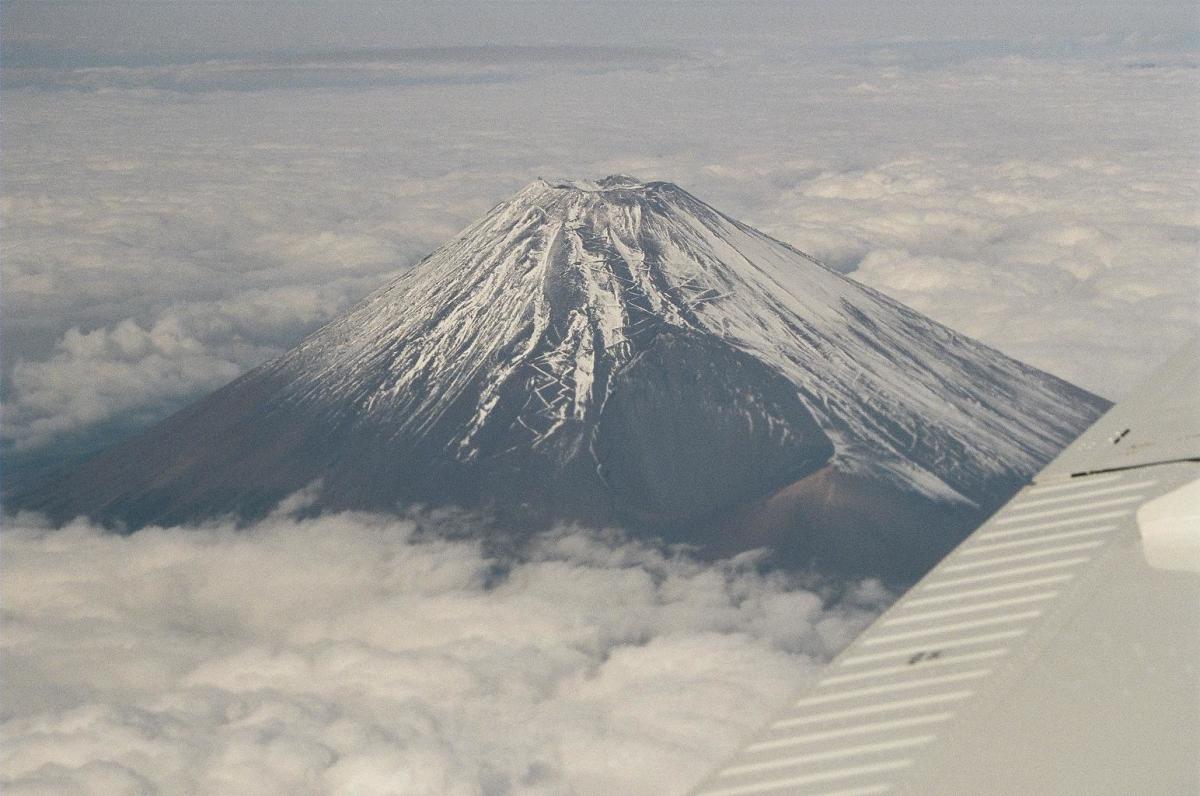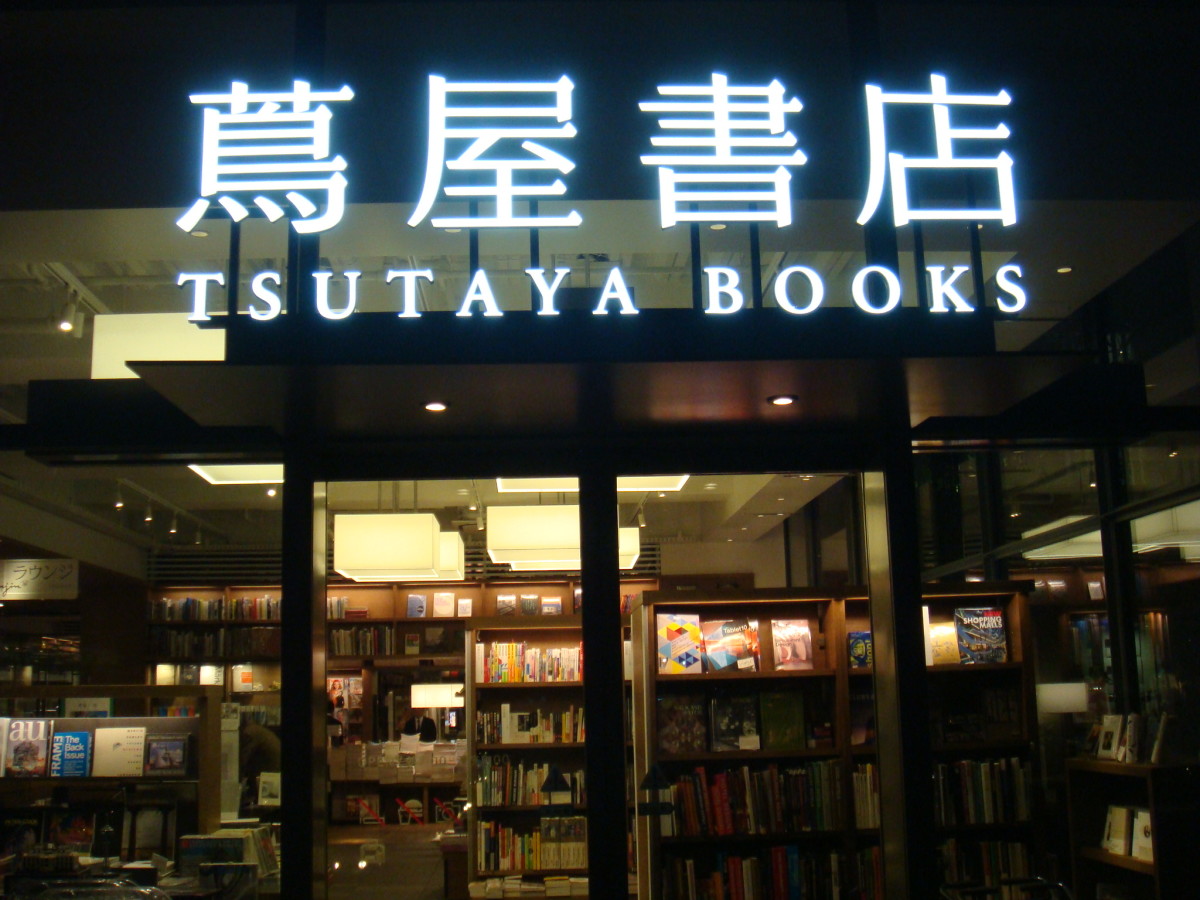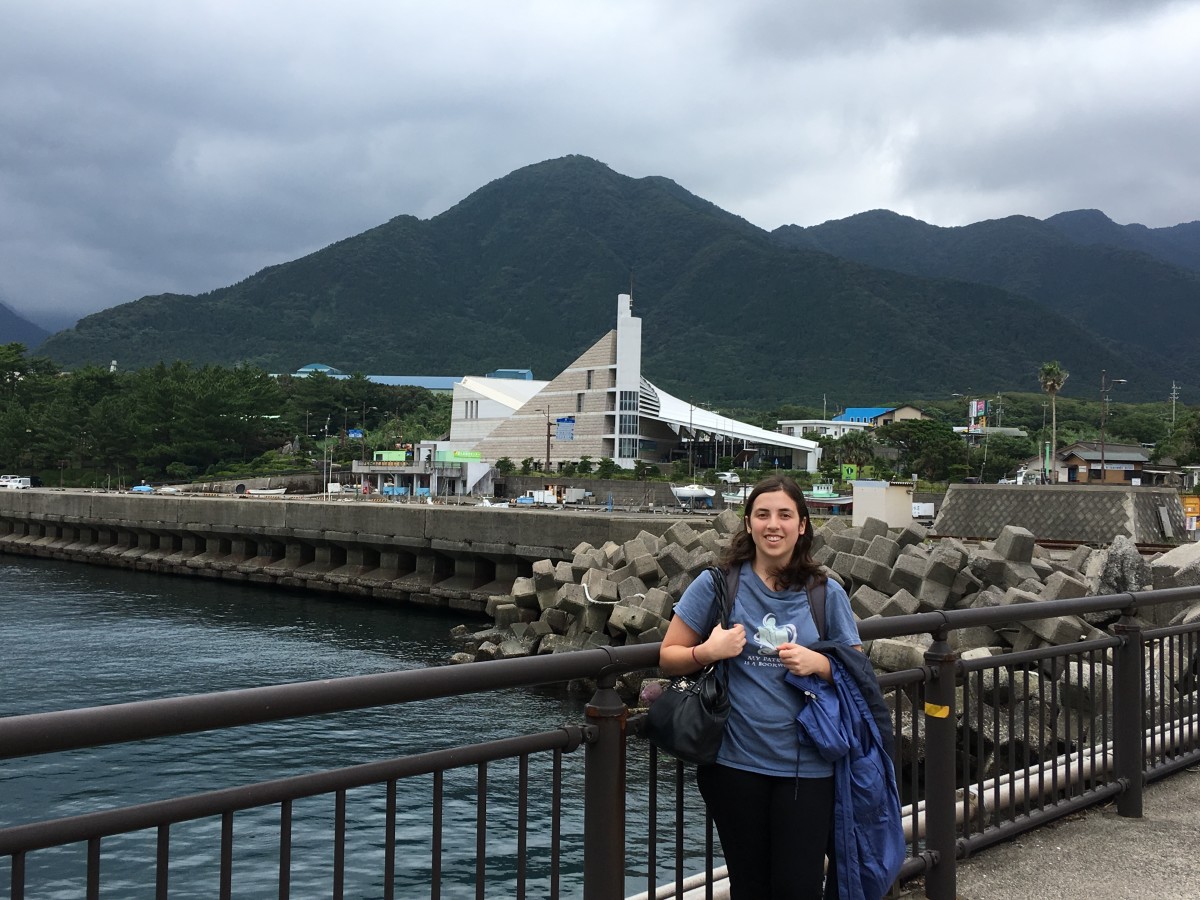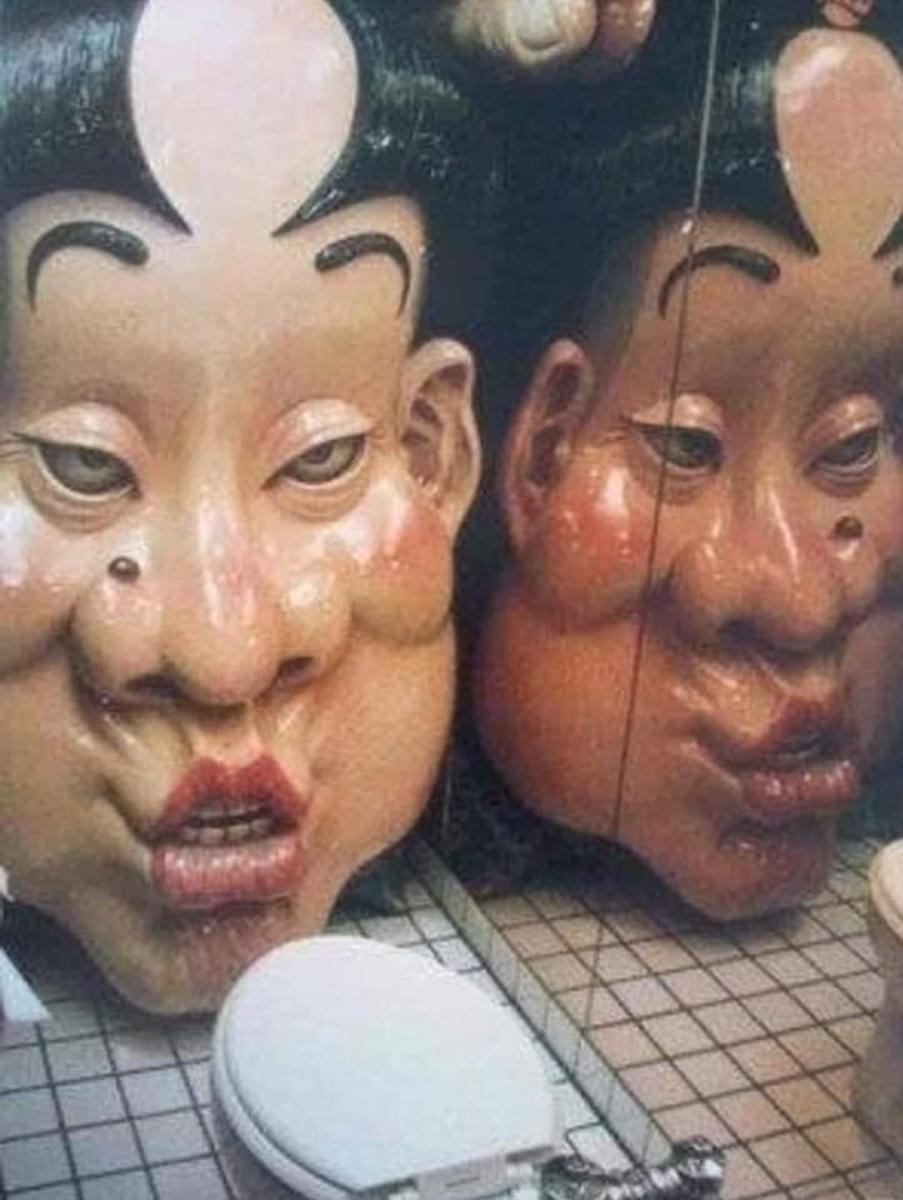- HubPages»
- Travel and Places»
- Visiting Asia»
- Eastern Asia
A Brief Day Trip To Kamakura - An Enticement For Disney and Tokyo Travelers
I Got Lost In Kamakura and Loved It
I have already posted a long hub detailing my itinerary for those who want to see Tokyo in only a day. (I hope everyone has more time than that, of course.) For those of you who have two days to dedicate to Japan (apart from your time at the fantastic Tokyo Disneyland Resort, of course), I highly recommend a day trip to the seaside town of Kamakura, a long ago capital of Japan, and now home to many ancient temples and shrines. If you haven't got the time to get to Kyoto, Nara or one of the other highly historic cities in Japan, Kamakura is easy to get to, and offers history, charm and natural beauty, all about an hour or so out of Tokyo.
(If you just want a quick glance at my own adventure, head to the video I've posted at the end of this hub.)
Kamakura - Beauty and History an Hour from Tokyo
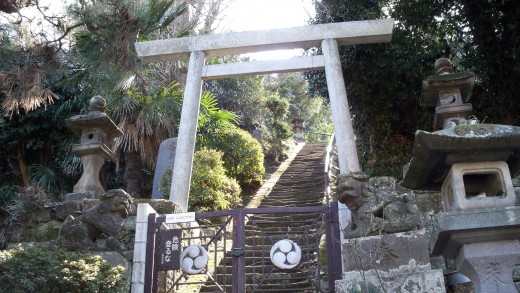
I had determined to spend an entire day there myself, but on the chilly, windy February morning of my selected day, there were record winds that shut down many of the train lines for a couple of hours. (I was actually on one of the elevated trains on the Keiyo line early that morning, and I could feel the track sway beneath the train as it entered a station. We were held there for over an hour, and the station master dutifully apologizd to everyone in person about the delay.)
So, my arrival in Kamakura came a bit late. I still had an amazing time there, and half of that time, I was hopelessly lost! (A good friend in Tokyo offered me a suggested itinerary for my Kamakura visit, and I followed it to a point. When I made a decision to depart from his well-considered plan, I wound up lost in the hills.) Here, I recount my own experiences, and encourage you not to do exactly as I did, but I still hope you will visit. (And tell me about your own adventures, of course.)
First, let's get you there. If you've read my Tokyo hub, you should have no trouble getting to Tokyo Station. (It's on the Yamanote line) You will have a chance to wander the endless labyrinth of platforms and escalators as you locate the JR Yokosuka line straight out of the city to Kita-Kamakura Station. This trip will take around an hour or so, and you will see urban Tokyo melt away, as charming rural stations appear outside your windows. (These stations reminded me of those magically depicted in Miyazaki animation.) Kita-Kamakura is actually a small community outside of Kamakura itself, but it's the locale of my first stop, Kencho-ji, the top item on my friend's recommendations.Kencho-Ji
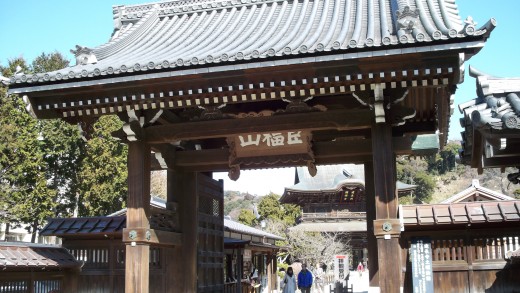
Kencho-ji is considered the greatest of the five great zen temples of Kamakura. Founded in 1253, it's the oldest active zen training monastery in Japan. A large wooden gate stands near the ticket booth (it will cost you 300 yen to enter), and beyond is a second gate, the impressive San-mon Gate, built in 1754. According to legend, San-mon was built with the help of a tanuki, the famous raccoon-dog species native to Japan. (Tanuki are often mis-identified as badgers. You will find tanuki statues in cemeteries and storefronts. They have magical powers and enormous testicles.) This particular tanuki magically disguised himself as a monk and coordinated the construction of San-mon, which is now referred to by some as the Tanuki Gate.
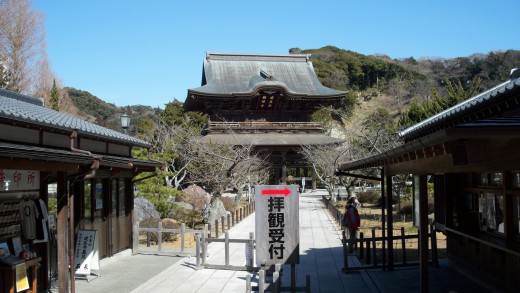
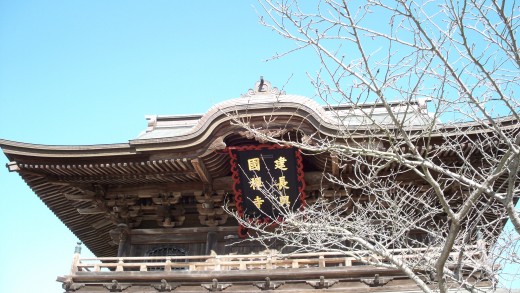
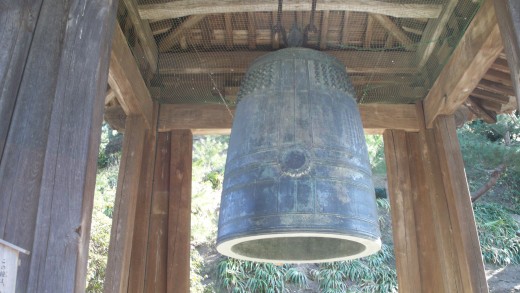
This is the Bonsho bell, cast in 1255, and today listed as one of Japan's national treasures. It stands on a platform, but is no longer rung.
The great wooden hall, Hatto, dominates the complex. The worship hall within contains a relatively new, and spectacular, dragon mural on its ceiling.
One not to be missed feature here is the Hansobo garden. Ascending several levels of steps, you will come face to face with Tengu guardian statues. There are several crow-tengu, with sharp beaks and claws and crow wings. (Perched atop their heads are small pillbox hats that lend them a certain resemblance to the flying monkeys of the Wizard of Oz.) An even larger long-nosed goblin tengu is also here, and I was so intimidated by him, I forgot to take any pictures! (I'll be back someday. Sigh)
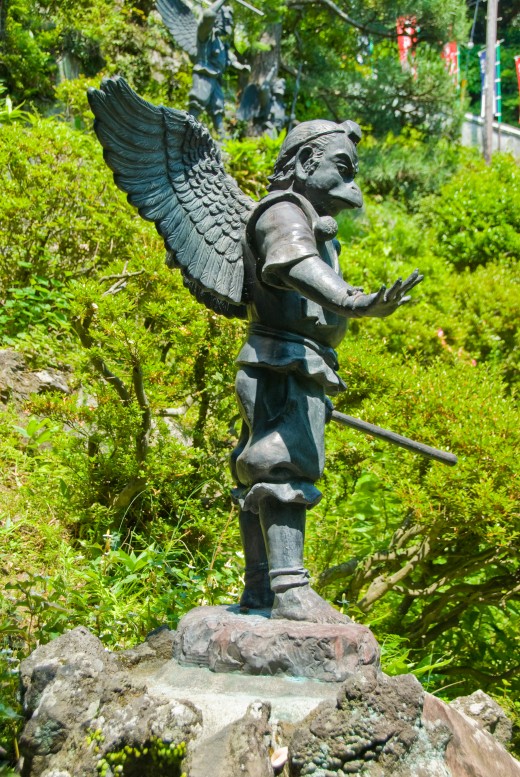
Kencho-ji is nestled in among several green hills, and while I was there, the wind blew steadily, creating a constant and gorgeous rustling of the branches overhead. The sun came out and the scene was bright and sunny, but still chilly. I lost track of time as I took off my shoes to explore the meditation hall and the zen garden behind it. I also seem to have forgotten that I had a camera. (!)
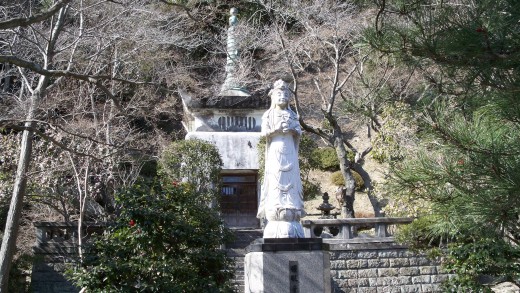
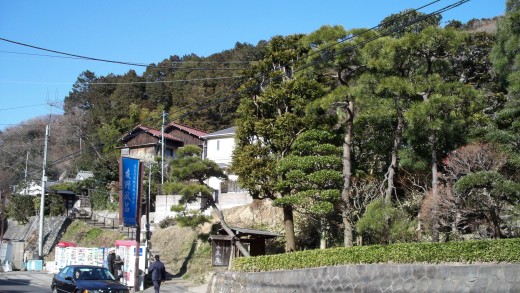
Jochi-ji
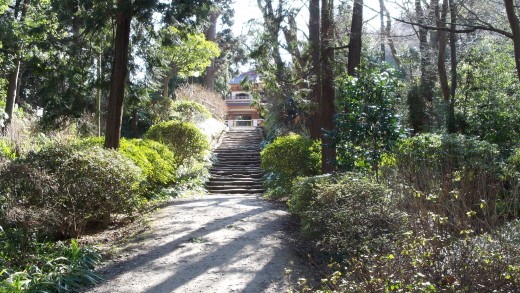
I continued back toward Kita-Kamakura station, to the Jochi-ji shrine. (This is where my friend's itinerary directed me to go next. It was also the last stop before I got myself derailed from the plan.)
Jochi-ji dates from 1283, and is also one of the five most important shrines, though it is now much smaller than it was in its heyday, and its handful of small buildings are of recent construction. It cost me 150 yen to enter the grounds.
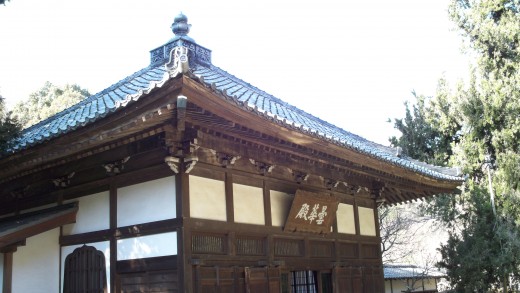
The very small worship hall contains three Buddha statues, Amida, Shaka and Miroku, who protect the past, present and future. After paying my respects, I wandered to the bamboo groves nestled in between tall cliffs of soft rock wall, just beyond the shrine.
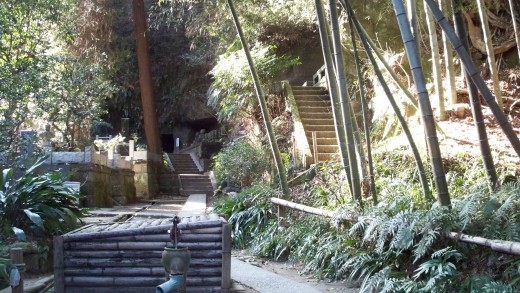
Here, there is an ancient graveyard, perhaps the most mystical and intriguing place I had yet encountered in my admittedly limited experience. Cave-like tombs called yagura are carved into the rock walls. Row upon row of stone gorinto towers mark the resting places of priests, nuns, artists, farmers. It is impossible to walk among these groves and grottoes and not slip into a contemplative frame of mind.
On a path leading back toward the shrine, I found a sign inviting passers-by to enter a cave and meet Hotei, the god of happiness. Passing through the narrow entryway, I ended up in another bamboo forest, and a smiling statue of Hotei met my gaze. Like countless others, I rubbed his left ear for good luck. (His left ear and finger are worn smooth from so many years of human contact.)
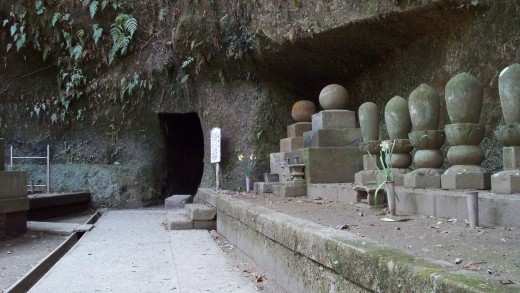
I was eager to get to my next destination, the Zeniarai Benten shrine. This place is famous for the popular ritual of washing money so that it will double, something I was eager to try, as my travel funds were nearly vanished. However, this is the point at which I made a deliberate decision not to follow the friendly advice I had been given.
Daibutsu Hiking Trail
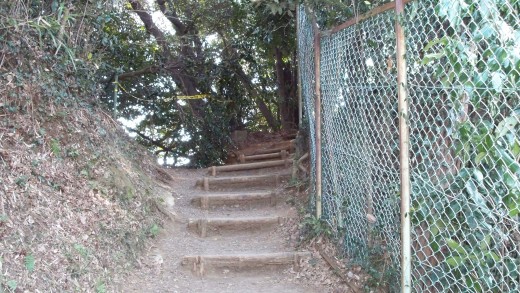
There is a hiking trail that begins right next to the Jochi-ji shrine, and I was under the impression that it would take me to both the Benten shrine and the famous giant Buddha of Kamakura. Now, my friend specifically told me to avoid the hiking trail, and for good reason. I wasn't feeling terribly fit at the time, owing to what I later learned was a hernia. The last thing I needed to do was to take a rigorous hike. But, for whatever reason, when I saw the trail entrance, it just looked too intriguing. The guidebooks said it would take half an hour to walk it. Silly me.
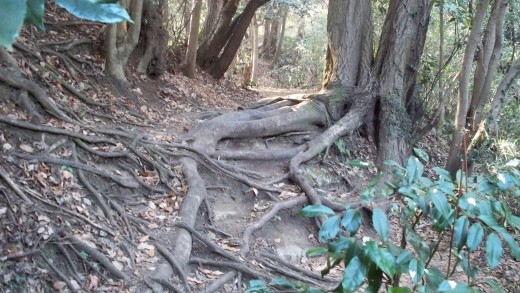
I never made it to the Benten shrine, and I got very lost indeed, as the trail eventually branched off in several directions, with only sporadic signs, always in Japanese, pointing out where I ought to be going. (I felt so proud that I had learned the kanji symbol for Daibutsu, the giant Buddha. That didn't end up helping me much.)
And the trail itself, while it began as a paved path with concrete steps and guard rails, slowly evolved into a dirt path that ran up and down very steep hills. This walk involved actual climbing, sometimes on hands and knees, up slopes of dirt and protruding tree roots. The temperature was still quite cool, but I managed to break a sweat.
But for all that, I loved it. I was surrounded by natural beauty, out of sight of traffic and shops, noise and commerce. It was bracing, inviting, and eventually a little scary, but an agreeable kind of scary. For one thing, there was always some trace of a path, sometimes very faint, and I reasoned that as long as I was on a trail, I would eventually end up somewhere. The long hike began to feel like a pilgrimage, and the giant Buddha would be my reward for dutifully taking this path. The cawing of crows filled the air, and I stopped at a wide spot in the trail, got out my digital camera, and began recording as I silently turned in a wide circle, hoping that I could digitally capture some of the nascent transcendence I was experiencing. I felt calm and still, a good kind of sad, a good kind of empty. I felt like connecting forever to these emotions of wordless understanding and uncomplicated existence. And I continued to slog along the trail, ignoring the creeping physical pain in my feet and sides.

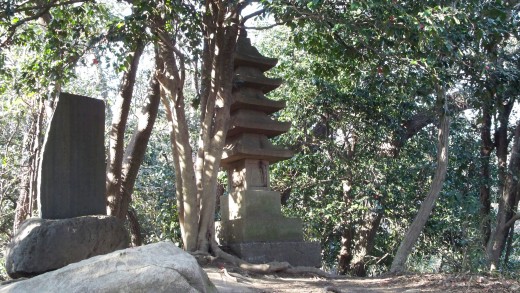
I took a breather at a small shrine near the top of a hill. It looked as though the main shrine had already closed, but there was a drink vending machine (okay, so I wasn't so very far away from commerce), and several patrolling cats. I rested here awhile, noticing that the sun was getting a bit low on the horizon. It would really be bad if I was still wandering through the woods when it got dark.
I have since browsed online maps of this trail, and I have no idea where I went wrong. I do know that I eventually met some fellow American travelers who had taken the same trail, thinking it would be a cakewalk, and one of them had wound up with a twisted ankle. Two of her sons had taken a nearby staircase down into a neighborhood where they were seeking help. I followed and caught up with them, and as they talked to a friendly local, who called a taxi for them, I asked where I could find the giant Buddha. (“Daibutsu-wa doko desu ka?” Boy, was I pleased with myself for having learned to say that!) The man looked at me and laughed. I was clearly not in the right place. He pointed me back up and over the long set of stairs, and made gestures that I pretended to understand. I went back the direction I had come, stopping to assure the injured woman that her sons had secured a ride for her.
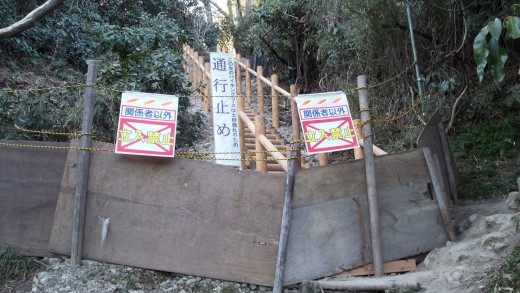
Eventually, I wound up at a staircase that, I feel certain, must have been the one I was looking for.
It was closed, decisively and unmistakably impassible.
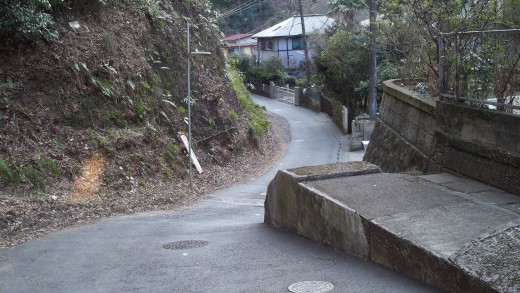
I wandered back down another hill, and onto another small neighborhood street. There I encountered an elderly gentleman raking in his yard. I indicated that I was lost but looking for the Daibutsu. “Daibutsu?” he said in an astonished tone. Then he chuckled and asked me to stay put as he went to make a call.
Before I knew it, a young couple pulled up in a car and the old man told me to get in. These very kind people took me to the nearest Enoden train station, and I thanked them by bowing profusely and trying to say “Domo arigatou gozaimasu” as meaningfully as I could.
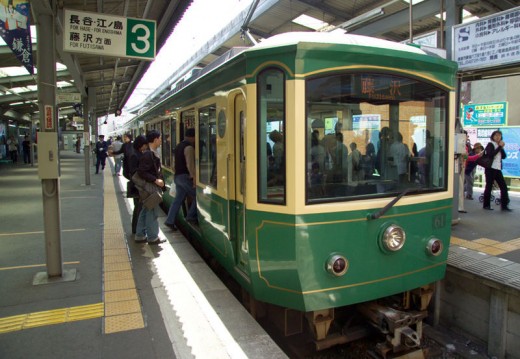
Kotoku-in and the Daibutsu
I had somehow ended up a stop or two away from Hase station, where sane people go to visit the Buddha. It was ten minutes to four by the time I got to Kotoko-in temple, the site of the statue, and the temple closed at four. I was allowed to pay the 200 yen to enter, and I finally raised my digital camera, at last to get a picture of the tranquil 40-foot tall Amida Buddha. My camera battery had run out. My spare battery was also out of juice. I trotted as quietly as I could to the gift boutique and purchased a Kodak single use camera for 1500 yen, then went back to spend my last few possible moments with the Buddha.
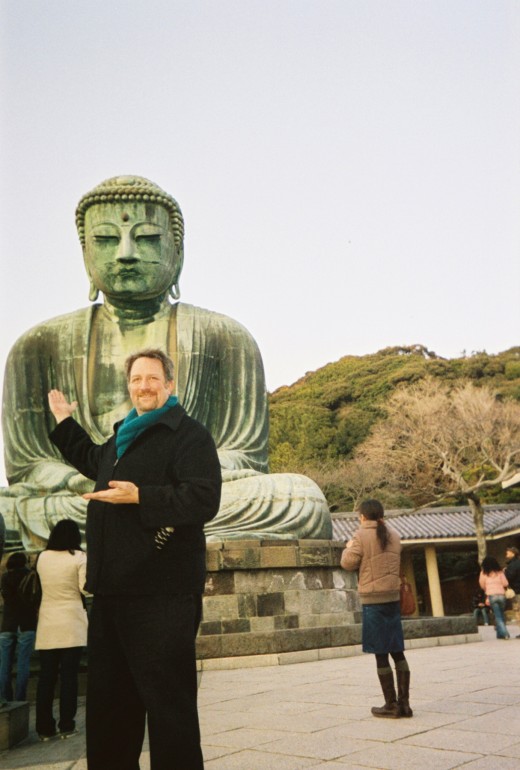
I handed the camera to a young man to take my picture. Here it is. Not framed up quite properly, but that's okay. Also, my “ta-da” gesture is a little less than dignified. It's still one of my favorite pictures.
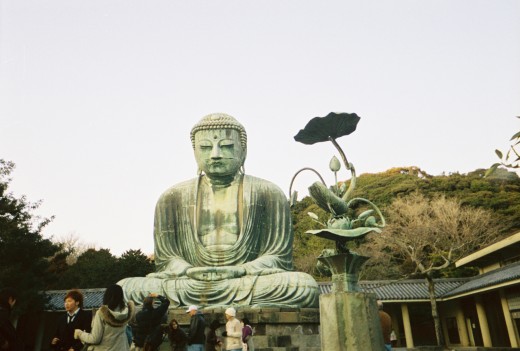
I wandered back to the Enoden train at Hase station, pausing only long enough to buy myself a soft-serve cone of purple Murasaki-Imo, a sweet potato flavored frozen treat famous in Kamakura. It was pretty tasty.
The Enoden took me from Hase station to Kamakura station in three or four stops, and then, I was back on the JR train, returning to Tokyo as the sun vanished and the many bright lights of the city sped into view. I sighed and promised myself to return to Kamakura one day, when I could spend more time and perhaps stick closer to the advice of friends. (Perhaps.)
And now, as promised, here is my video, commemorating this visit in the form of a tone poem. I hope you enjoy it.
